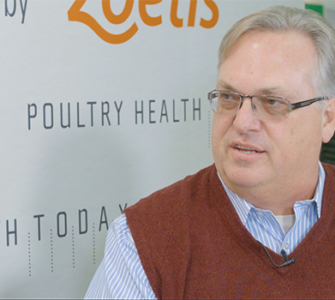Understanding the role of the poultry sector in antibiotic resistance
ATLANTA, Jan 27 – Antibiotic usage in poultry, its effects on antimicrobial resistance and human health have become highly politicized issues but they are really important, according to Professor Randall Singer of the University of Minnesota.
Optimum use of antibiotics in the poultry sector emerged among the hottest topic at the International Production and Processing Expo (IPPE) in Atlanta, U.S. in 2016.
According to Professor Singer, poultry and livestock producers must stop being defensive about the use of antibiotics and stop trying to maintain the status quo. He was giving the Milton Y. Dendy Keynote Address that traditionally concludes the International Poultry Scientific Forum.
On the development of antibiotic resistance generally, it is generally held that high doses of antibiotics over a short period of time is the best policy. However, as Singer demonstrated. High doses may select strongly for resistance and actually spread the resistance. Low doses over a longer period – for example, to boost growth or prevent disease – are less likely to induce resistance because the normal bacterial flora is not significantly altered. Under these conditions, they do not kill the susceptible population, thus maintaining a better balance in the bacterial population.
Singer went on to explain that antibiotic dose and the density of treatment – in other words, whether individual animals or the whole flock – really matter. There is little evidence from trial on farms but work in pigs suggests that a low but adequate dose allows for the re-establishment of a balanced gut environment (“microme”), while a high dose allows a resistant population to dominate.
Work needs to focus on the development of strategies to maintaining flock health without antibiotics, such as vaccines and other compounds that modulate the immune response. The focus needs to be on the development and maintenance of a health gut microme. It is vital that interventions do not make resistance worse, said Singer.
The focus of the industry should be on the responsible use of antibiotics, according to Singer, and this represents a good opportunity for the sector to both lead and define what that means for commercial production.
As the regulations and market requirements change the focus of antibiotic use from feed efficiency and disease prevention to the treatment and control of disease, resistance will be affected, and these changes need to be anticipated so much more research is required in this area. It is important to understand better how the density of selection and dose of antibiotic impact resistance on farms.
Among the areas that need particular attention are the excretion of antibiotics and their metabolites in manure and what effects they may have in the wider environment. The results could impact future methods of manure and litter disposal.
“It is important to understand that a policy of using antibiotics to treat and control bacteria could make the situation a lot worse,” concluded Singer. He stressed that the poultry and livestock sectors take an active part in any future regulatory changes to prevent this worst-case scenario becoming a reality.
Posted on January 28, 2016

















